A clogged sink drain can be a frustrating and inconvenient problem, but it can be easily fixed with a little know-how. You can try several methods to unclog your sink drain, depending on the severity of the blockage and the tools you have available.
A clogged sink drain can be a huge hassle. It’s messy, inconvenient, and often requires expensive plumbing services. However, did you know there are some simple ways to unclog your sink drain on your own?
Here we will teach you everything you need to know about how to unclog a sink drain. From the causes of clogs to prevention tips for keeping your sink clear, we’ve got you covered. We’ll also provide DIY methods before calling in professional help, such as boiling water, baking soda and vinegar, a plunger, and a plumbing snake.
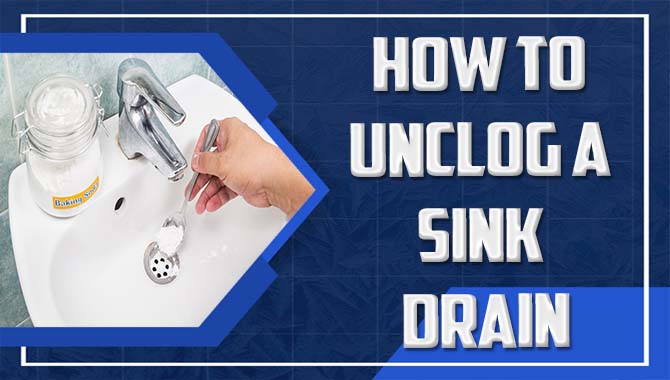
How To Unclog A Sink Drain: 6 Easy Steps
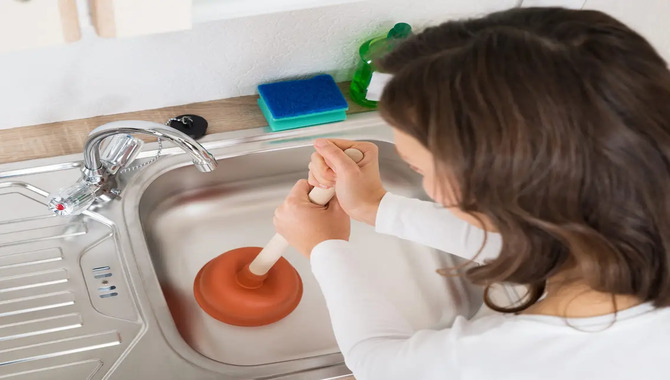
If you’re experiencing a clogged sink drain, it’s essential to know how to unclog a sink drain effectively. Start by understanding the common causes of sink clogs like hair, soap scum, and food particles. If you’ve ever had a clogged sink drain, you know how frustrating it can be.
By following these steps, you can easily unclog your sink drain and get back to your daily routine without any further hassle. Luckily, unclogging a sink drain is a fairly simple process that can be done in just six easy steps.
- Remove any visible debris from the drain.
- Pour boiling water down the drain.
- Use a plunger to try and dislodge the blockage.
- Use a plumbing snake to break up the blockage if the plunger doesn’t work.
- Try using a natural or chemical drain cleaner if the snake doesn’t work.
- Test the drain by running water through it to ensure that it is fully unclogged.
Save Money – Try These DIY Methods First
Avoid spending money on expensive plumbers using these cost-effective DIY methods to unclog your sink drain. Start with the basics: use a plunger or drain snake to remove the blockage. If that does not work, try pouring boiling water down the drain or using vinegar and baking soda.
Remember to follow safety precautions when using chemical cleaners, such as wearing gloves and ensuring proper ventilation. Regular maintenance is also crucial in preventing future clogs in your kitchen sink or bathroom sink drain.
Boiling Water: Simple Solution FOR Clogs
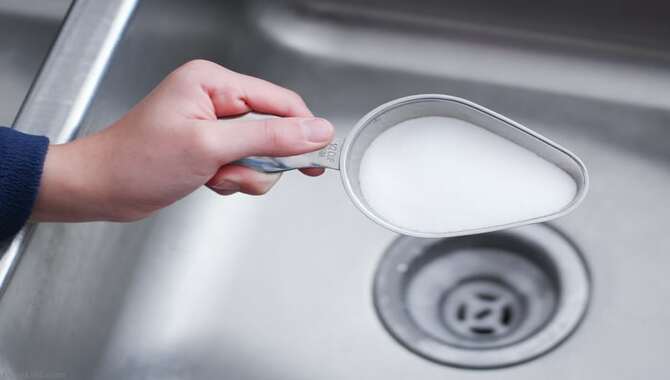
Try boiling water if you’re looking for an easy and eco-friendly way to unclog a sink drain. This simple solution effectively melts buildup from soap scum, grease, and food particles that can cause clogs. To use boiling water, bring a kettle or pot to a boil and carefully pour it down the drain.
Be sure to take necessary precautions to avoid burns or damage to your plumbing system. For stubborn clogs, you may need to repeat this process multiple times. Other effective methods include using baking soda and vinegar or a plunger.
Baking Soda AND Vinegar: Natural Ways TO Unclog
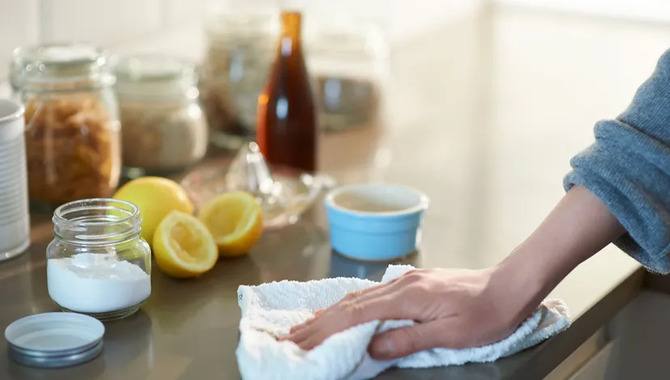
In case you’re dealing with a clogged sink drain and looking for an eco-friendly solution, look no further than this simple DIY method. Begin by pouring half a cup of baking soda into the troubled drain, followed by half a cup of white vinegar.
Leave the concoction in the blocked drain for 10-15 minutes before flushing it out with hot water to remove any gunk or buildup that might be causing issues. Repeat this process or consider using a plumbing snake for more stubborn blockages.
Plunger: Basic Tool FOR Sink Clogs
Plungers are an essential tool in your arsenal for unclogging a sink drain. It is important to choose the right size and shape for effective suction. Ensure a tight seal between the plunger and the drain before plunging. Use quick, forceful plunges to dislodge any blockage in your sink drain.
You can repeat this process as many times as necessary. If plunging doesn’t work, try using different methods, such as vinegar and baking soda or call in an expert plumber.
Plumbing Snake: Effective FOR Stubborn Blockages
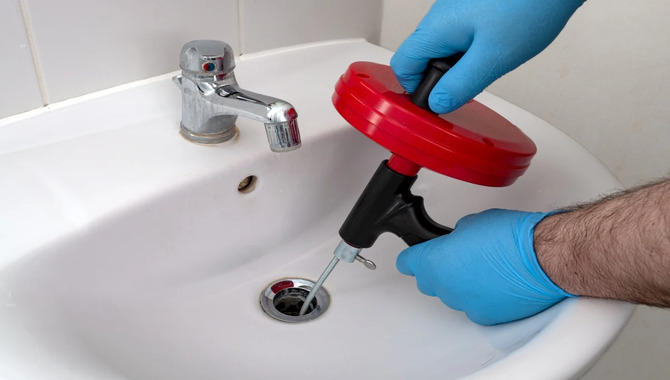
To effectively clear stubborn clogs in sink drains, homeowners can use a plumbing snake as a helpful tool. When choosing a plumbing snake, select one that is correctly sized and designed for your specific pipe system.
Exercise caution when inserting the plumbing snake into the drain, rotating it as you slowly pull it out to remove any blockages or obstructions that may be present. For best results, always wear gloves and protective eyewear when using a plumbing snake to avoid injury from any debris that may fly back during the process. Incorporating these tips can help prevent future clogs and keep your sink drain flowing smoothly.
Commercial Drain Cleaner: Last Resort Option
Commercial drain cleaners should be your last resort option when unclogging a sink drain. Remember that these products often contain harsh chemicals that can damage pipes and harm the environment. Before reaching for chemical solutions, try some natural methods first.
Baking soda and vinegar or a plunger can be effective tools for clearing away mild clogs. If the blockage is stubborn, consider using a drain snake or calling in a professional plumber for assistance. To prevent future clogs, use a sink strainer to catch debris and avoid pouring grease down the drain.
Prevention Tips FOR Keeping Your Sink Clear
Follow these simple prevention tips to keep your sink drain clear and prevent future clogs. Rather than pouring grease or oil down the drain, which can cause blockages as they solidify in the pipes over time. Use a sink strainer to catch debris, such as food scraps and hair, before entering the drain and creating obstructions.
A regular flush of hot water can help break up any buildup inside the pipes of your plumbing system. To keep your pipes free of soap scum or grime, use natural cleaners like baking soda and white vinegar, which are excellent at dissolving mineral deposits left by hard water.
If you cannot clear a blockage using natural methods, don’t hesitate to call in a professional plumber with access to advanced equipment for clearing stubborn clogs in kitchen sinks or bathroom sinks without damaging your plumbing system.
What Causes A Sink Drain TO Clog?
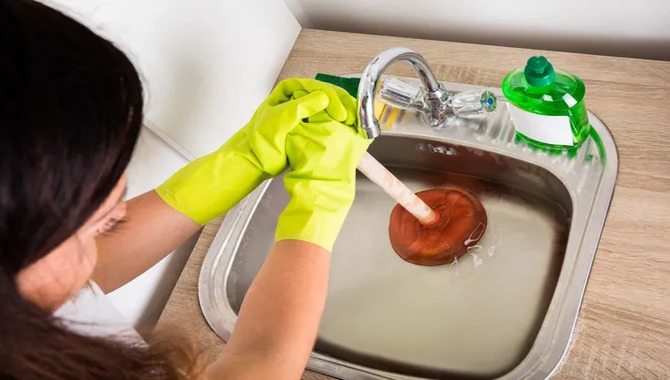
A sink drain can become clogged due to various reasons. One of the most common causes is the accumulation of food scraps, grease, and oil that gets washed down the drain. Hair, soap scum, and mineral build-up from hard water can also contribute to clogs.
Over time, these materials can block the pipes, preventing water from flowing freely through the drain. It’s important to take steps to prevent clogs from forming in the first place and address them promptly if they do occur.
How TO Use A Plunger Effectively?
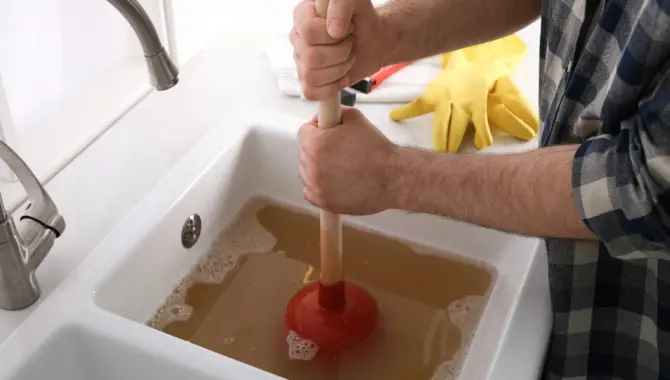
Using a plunger is an effective way to unclog a sink drain. First, fill the sink with enough water to cover the bell of the plunger. Then, place the plunger over the drain and push it down firmly to create suction. Pump up and down vigorously for several seconds, then release the plunger to break the seal.
Repeat this process until the drain starts to clear. If the clog is stubborn, try using a plumbing snake or call a professional plumber for assistance. Remember always to wear gloves and protective eyewear when using any plumbing tools.
Conclusion
A clogged sink drain can be a frustrating problem, but there are several ways to solve it. Remember to be mindful of what goes down your drain to prevent future clogs, and consider using a strainer. While dish soap can work in a pinch, sticking with white vinegar or baking soda is safer and more effective for unclogging your sink.
However, Unclogging a sink drain can seem daunting, but with the right knowledge and tools, it can be a simple task. Before spending money on a plumber or commercial drain cleaner, try the DIY methods we mentioned. Always remember to take precautionary measures before attempting any unclogging techniques.
Prevention is also key to clearing your sink drain and avoiding future blockages. By using a plunger or drain snake and following above mentioned how to unclog a sink drain, and you can quickly and easily clear unclog your sink drain.
Frequently Asked Questions:
[rank_math_rich_snippet id=”s-f23b1544-4241-4366-b13d-2ca82a6e2862″]

I am passionate about home engineering. I specialize in designing, installing, and maintaining heating, ventilation, and air conditioning systems. My goal is to help people stay comfortable in their homes all year long.
